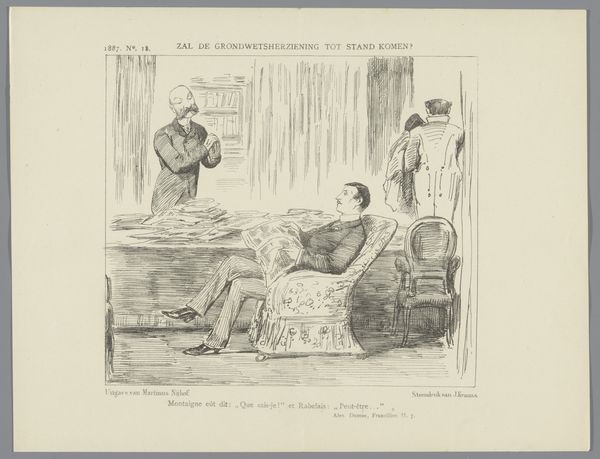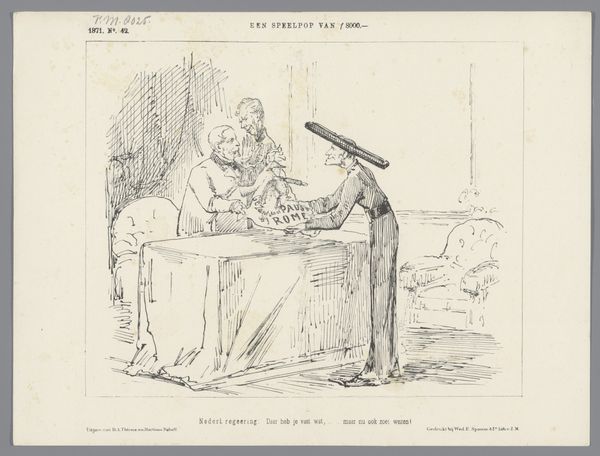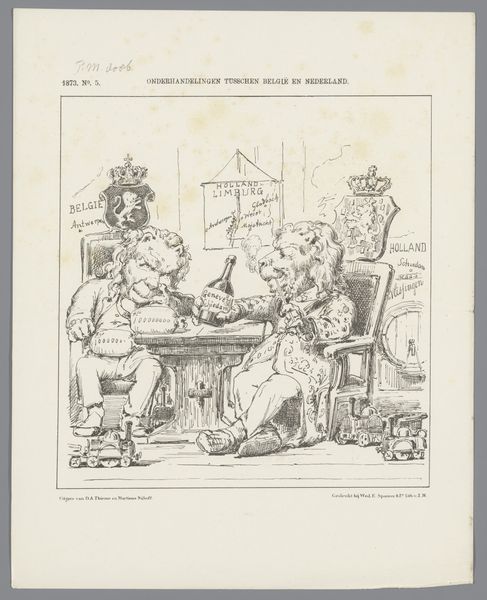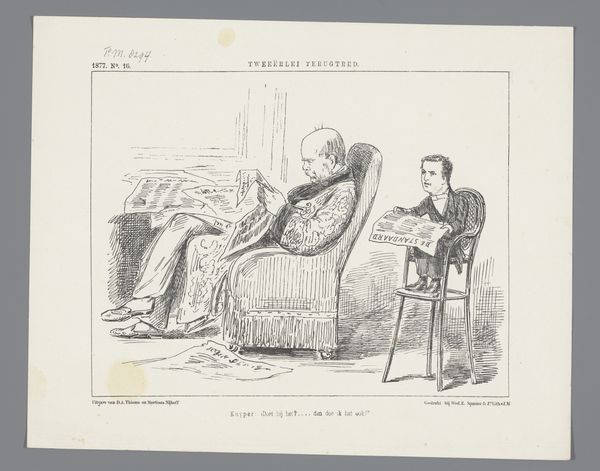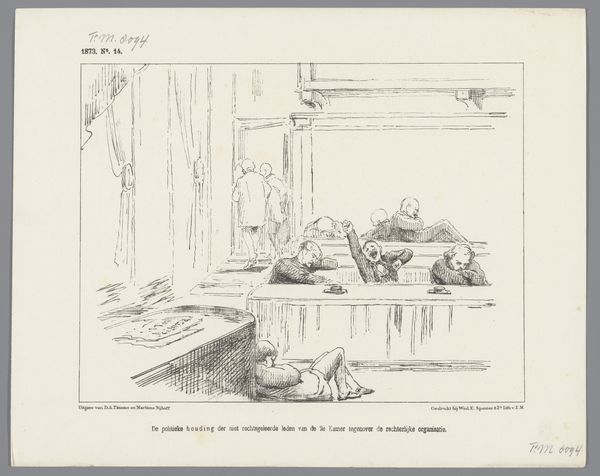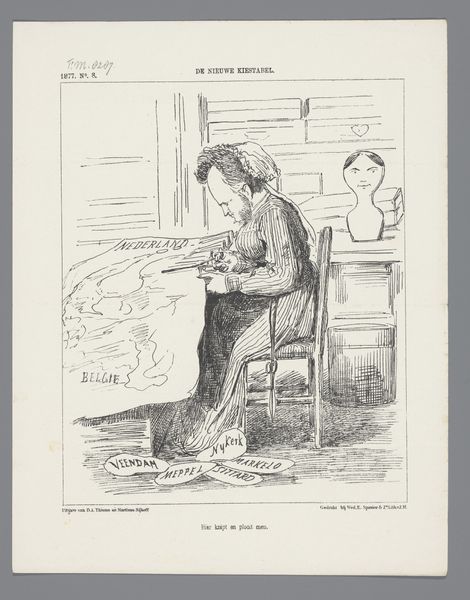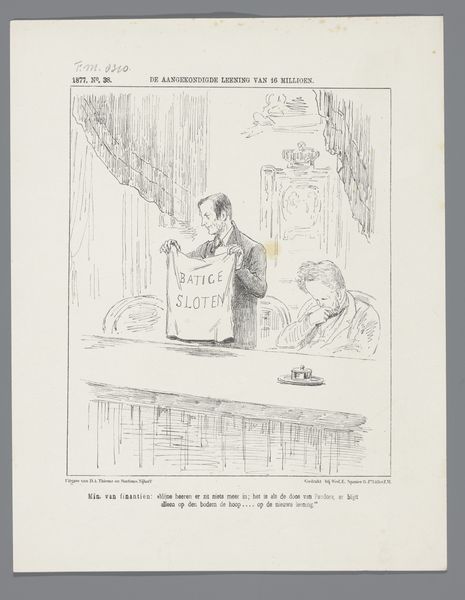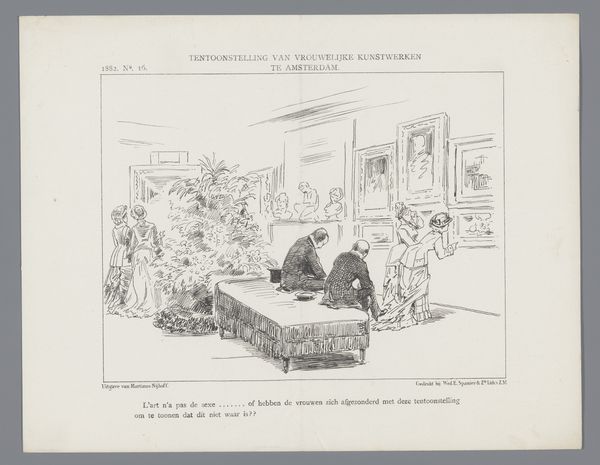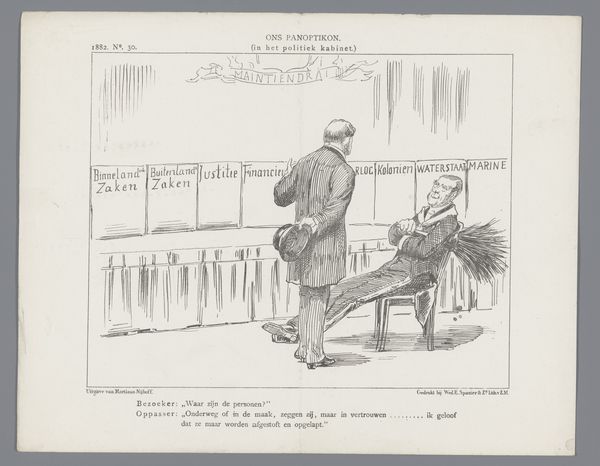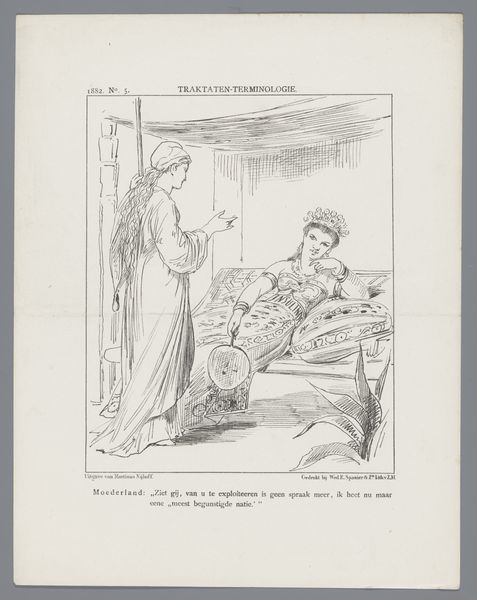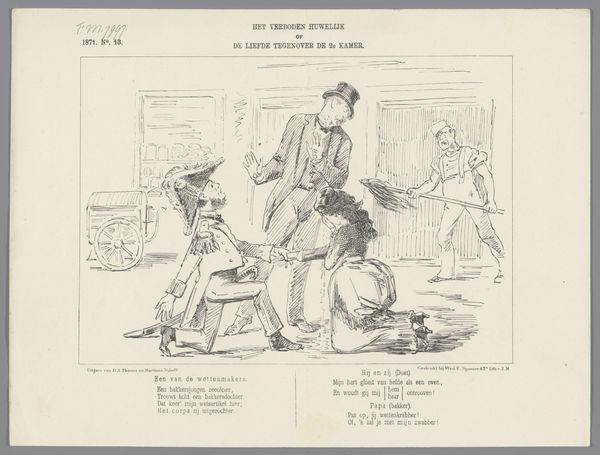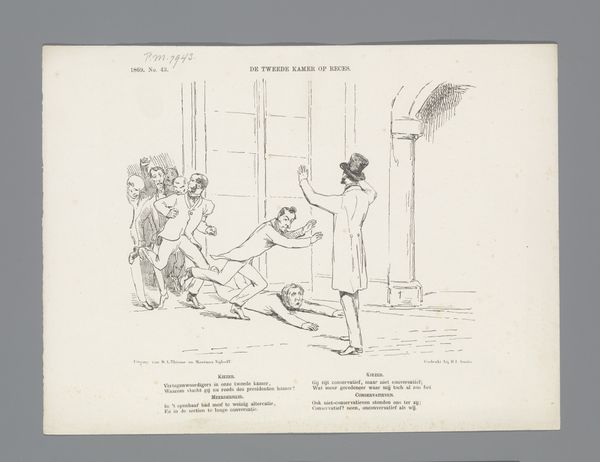
print, ink
# print
#
caricature
#
ink
#
line
Dimensions: height 215 mm, width 275 mm
Copyright: Rijks Museum: Open Domain
This lithograph, created in 1883 by Johan Michaël Schmidt Crans, employs a process capable of reproducing images quickly and cheaply. The artist would have drawn on a flat stone with a greasy crayon, then chemically treated the surface to allow ink to adhere only to the drawn areas. Here, the lithographic medium is crucial to the work's satirical intent. The choice of a mass-producible technique allowed for wide dissemination of the political message, commenting on Minister De Brauw's controversial policies. The hard, unforgiving lines of the printmaking process emphasize the rigidity of the minister's position, visually linking his leisure to the chains of colonial exploitation. The chain binds him to a box labeled 'Billiton ting' alluding to the Billiton Company and the exploitation of tin mines. The print's stark contrasts reflect the sharp social divisions of the era, and the lithographic process, though not inherently precious, becomes a potent tool for social critique. By understanding the print's method of production, we see how it engages with wider issues of labor, politics, and consumption, blurring the lines between art, craft, and social commentary.
Comments
No comments
Be the first to comment and join the conversation on the ultimate creative platform.
